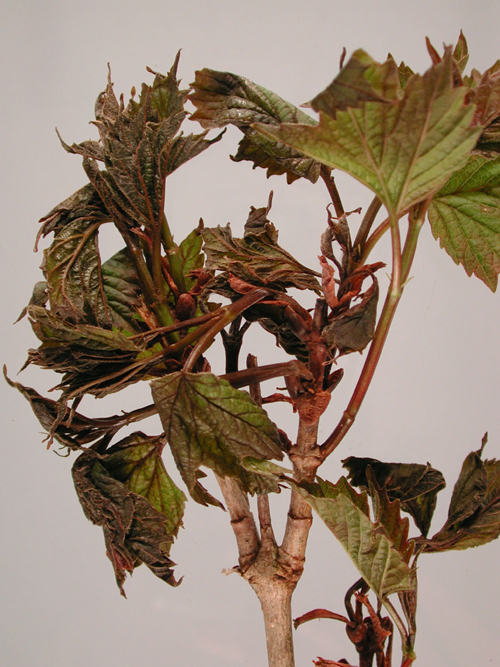


Plan to harvest fields with bacterial blight first and shred cotton stalks as early as possible. Limit the movement of equipment through wet fields to reduce the spread of blight in season. Because blight can disseminate rapidly in warm, wet conditions, any management practice to promote drying of cotton leaves may help reduce the development of blight.

There are currently no products labeled for use against the disease. Dense, rank growth can disrupt air flow within the canopy creating a conducive environment for disease development. While no fungicides are recommended for bacterial blight, growers may choose to apply growth regulators to prevent further rank growth of their crop. Blowing dust and sand events have been linked to bacterial blight epidemics. 3 The pathogen enters host plants through open stomata or wounds. Wind, water, and thunderstorm fronts can disseminate the bacterium beyond the initial point of infection. The bacterium is capable of overwintering on plant debris. Prior to the widespread commercial use of acid delinting of planting seed, seed-borne inoculum of Xanthomonas citri pv. 1 Low levels of bacterial blight are commonly observed and reported in various cotton-producing regions however, symptoms of bacterial blight will be most severe and spread when humidity is high and air temperatures average 86 to 95 ☏. Boll lesions first appear to be “water-soaked” and round, and later sunken and dark brown or black. The systemic spread of infection to leaf petioles, stems and branches may result in black cankers (“Blackarm” lesions) that can cause portions of the plant to die above the canker. 1 Other parts of the cotton plant may become infected following the production of secondary inoculum. The lesions appear to be angular due to the restrictions by veins within the cotton leaf. In cotton, bacterial blight symptoms are first observed as small, water-soaked lesions that are noticeable on the upper and lower leaf surfaces.


 0 kommentar(er)
0 kommentar(er)
